| |||||||
| Search Forums |
| Advanced Search |
| Go to Page... |
 |
| Search this Thread |  2,774,222 views |
| | #1 |
| Team-BHP Support  | Skoda Rapid : Test Drive & Review The Skoda Rapid has been launched in India at a price of 6.75 - 9.19 Lakhs (ex-Delhi). What you'll like: • A well-built European car • Better package than the Vento at a lower, VFM price • Superb diesel engine; good driveability and 250 Nm of torque • Mature ride & handling setup • Confidence inspiring dynamics, brakes and chassis • Easy to drive Automatic transmission. Different modes to suit your style of driving What you won't: • Skoda's scary after-sales-service • Not as feature laden as the competition (No steering mounted controls, USB stereo, parking sensors etc.) • Sluggish "D" mode of the Automatic gearbox • Petrol engine isn't as impressive as the diesel • Tall rear floor hump makes the Rapid more suited as a 4 seater, than 5 The 2014 1.5L DSG: • Link to review The 2020 1.0L TSI • Link to review 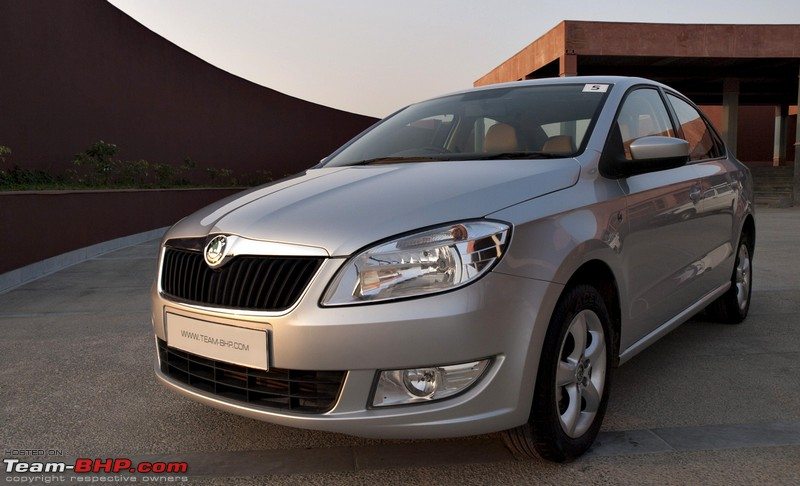 NOTE : This car has been jointly reviewed by Vid6639 and Samurai Last edited by Aditya : 4th August 2020 at 20:30. Reason: Adding link to 1.0L TSI Review :) |
| |  (45)
Thanks (45)
Thanks
 |
| The following 45 BHPians Thank Samurai for this useful post: | .anshuman, aargee, amitpunjani, amitwlele, anekho, anilkalvani, anonymous, arjab, AutoIndian, Batfreak, echo77, flyingkolors, gigy, Govardhansupra, GTO, hellmet, kanna.sridharan, Klub Class, kryptonite, Loud, lurker, Maneesh, mohandas, moralfibre, Pallavi, Patriot_Vishwas, pow3r2dawh33ls, PrasunBannerjee, rajni, RavenAvi, Rshreyansh, RSR, SaiSW, SDP, shobhit.shri, SmartCat, supremoo, swiftnfurious, Tejas@perioimpl, Th!ru, theexperthand, The_Outsider!, v&v, wmanu, _raVan_ |
| |
| | #2 |
| Team-BHP Support  | Re: Skoda Rapid : Test Drive & Review 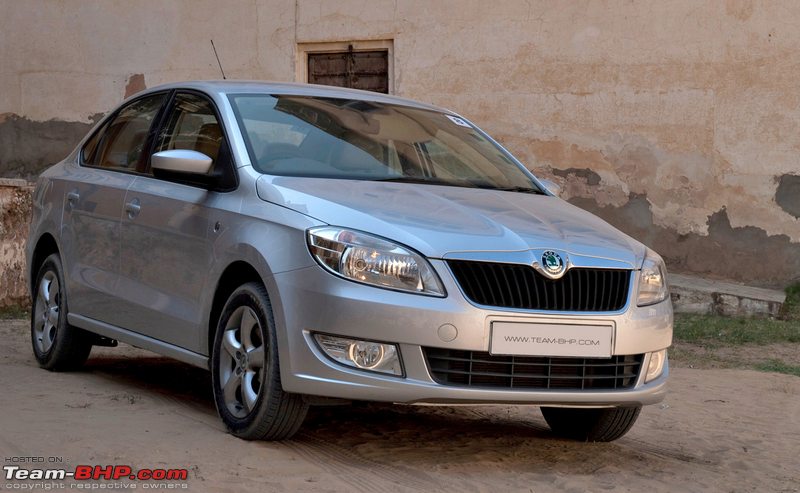 Skoda has had its fair share of hits & misses in the Indian space. The Superb is the superstar amongst the 20 lakh rupee cars, the Laura still manages to bring in decent numbers 6 years since launch & the Fabia has improved its sales performance after the recent facelift. Who can forget the Octavia that was, in its time, the best selling C+ segment car. On the other hand, the new Yeti has failed in the market, while Fabia sales pale in front of its competitors (including the VW Polo). What Skoda needed is an all-rounded sedan....a sequel to the Octavia if you will. When you look at the Rapid for the first time, it seems like Skoda took the Vento from VW and slapped the Fabia’s front end onto it. That's not entirely untrue, and no one can deny the identical nature of the 2 cars. This could be a good and bad thing for VW. Having 2 nearly identical cars could result in numbers falling for the Vento, as the Rapid is expected to undercut the VW in pricing. But then, that didn't happen with the Fabia & Polo, did it? Individually, each car may not end up a segment leader, but the parent company (VW) could be satisfied if the combined sales of the Rapid and Vento are more than the Honda City and Hyundai Verna. It's when you start taking a closer look at the Rapid that you realize there’s more to it than just a change of headlamps and radiator grill. Although the bonnet looks similar to that of the Fabia, it’s actually much longer and isn’t as sharply raked as in the hatchback. The bonnet also extends over the front fenders. The front bumper is redesigned as well, though the headlamps, grill and fog lamps are sourced from the Fabia. The side profile is exactly the same as the Vento and you’ll be forgiven for not being able to tell one from the other. At the rear, the Rapid gets a neat nip and tuck job. The boot lid, rear bumper and tail lamps are all new, and the rear design is much sharper than the Vento's. Skoda’s new design theme makes its way into the Rapid for the first time with 2 sharp edges on either side of the number plate (like a prism edge). Also, the kink of the Vento's boot lid is replaced by a straight line on the Rapid. Samurai & I both prefer the Rapid's design to that of the Vento. 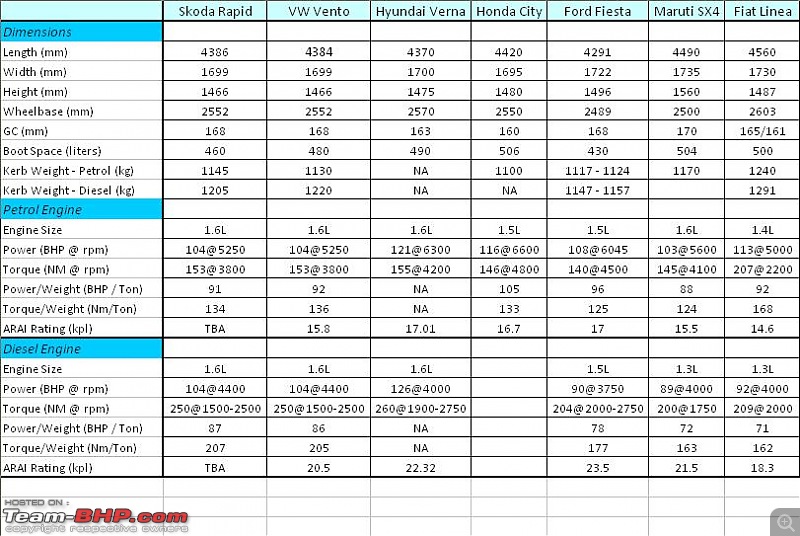 No surprises when you gauge how the Rapid stacks up against the competition on paper. The external dimensions are identical to the Vento, save for a couple of mm in length. What’s strange is the weight difference! The Rapid Petrol is 15 kilos heavier than the Vento, while the Diesel is 15 kilos lighter than its VW sister. This might boil down to the varying trim levels and possibly the manner in which they were measured. Even the boot capacity differs by 20L (lesser than Vento), though the size, layout and spare wheel are identical between the two cars. Expectedly, the engine specs are exactly the same as the VW sedan. Unlike the Vento which is (strangely) available in only 2 variants, Skoda has done better by offering the Rapid in 3 trim levels. There’s the base 'Active', mid-level 'Ambition' and the highest 'Elegance' trim. A pleasant surprise was that both, the Ambition and Elegance variants are available with an Automatic. The Elegance trim is similarly kitted to the Vento with 15” Antares Alloy wheels, climate control, electric mirrors, driver and front passenger airbags, ABS and an audio system with SD card slot + Aux input. Recent additions to the Vento Highline diesel - namely parking sensors, steering mounted audio controls and USB slot - do not make their way into the Rapid Elegance. The Active variant is too bare bone with just the basic features and no safety kit. This trim level is probably best for the taxi segment only, or those on a very tight budget. The Ambition variant is devoid of alloys, audio system, passenger airbag, electric mirrors, and gets a less comprehensive multi-function display. It still has ABS with brake assist, driver airbag, remote locking with boot release, fog lamps, height adjustable drivers seat, steering adjustable for both reach and rake and all the other necessary features from the Elegance. This makes the Ambition an excellent VFM option. As was expected, the Skoda Rapid has been launched at a price point lower than the VW Vento. This has resulted in a new value-for-money player within the upper C sedan segment! The Rapid undercuts not only the Vento, but also the Honda City, Hyundai Verna and Ford Fiesta. The Skoda's fully-loaded variant is priced a whopping 60,000 rupees lesser than the Vento Highline. The Vento's base model 'Trendline' which is devoid of any safety features is just Rs.600 lesser than the Rapid's 'Ambition' which is equipped with ABS and driver airbag!! And the Skoda ends where the over-priced Fiesta doesn't even offer its starting variant. The SX4 was always considered to be the most well-priced in this segment; compare the top-end petrol prices and you'll see that the Skoda Rapid is priced within Rs. 25,000 of the Maruti! Further, the Rapid AT is now the cheapest Automatic sedan you can buy in the country, thanks to the AT being offered as an option on the middle variant. FYI : the Ambition AT is priced only Rs. 50,000 more than the Hyundai i20 AT. 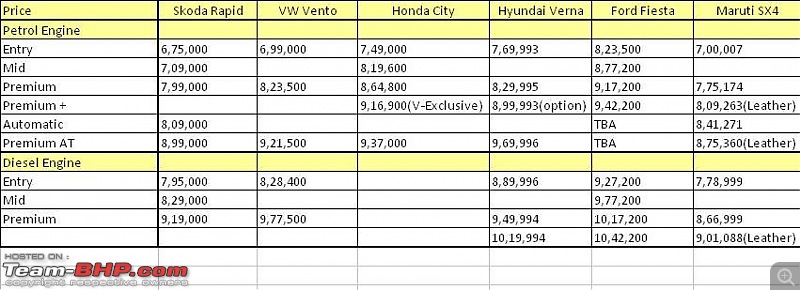 Front end similar to Fabia, but does not look out of place: 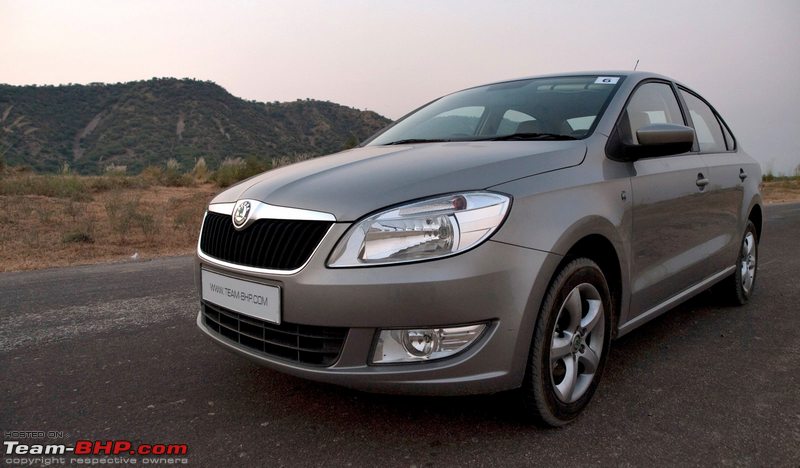 Front three quarter view shows the extended hood: 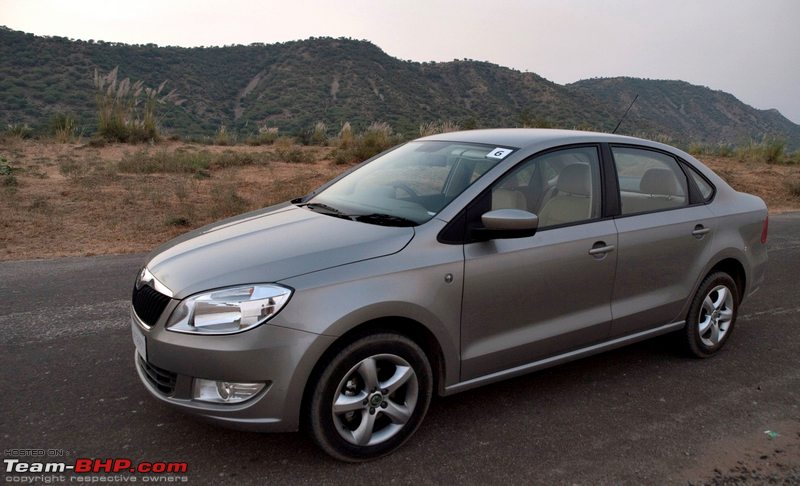 Sharp rear end. Notice the prism cuts on either side of the number plate garnish: 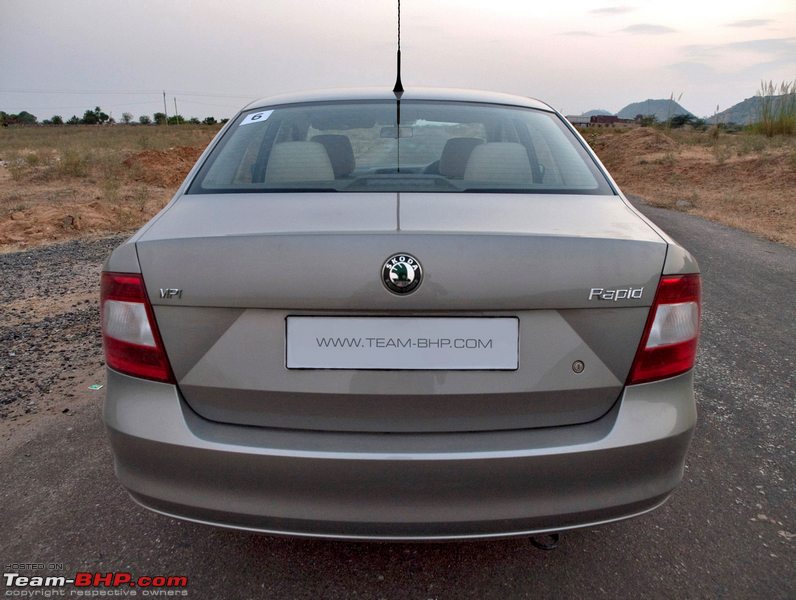 Typical Skoda tail-lamps. The tail lamps and boot don't have the kink as seen on the Vento: 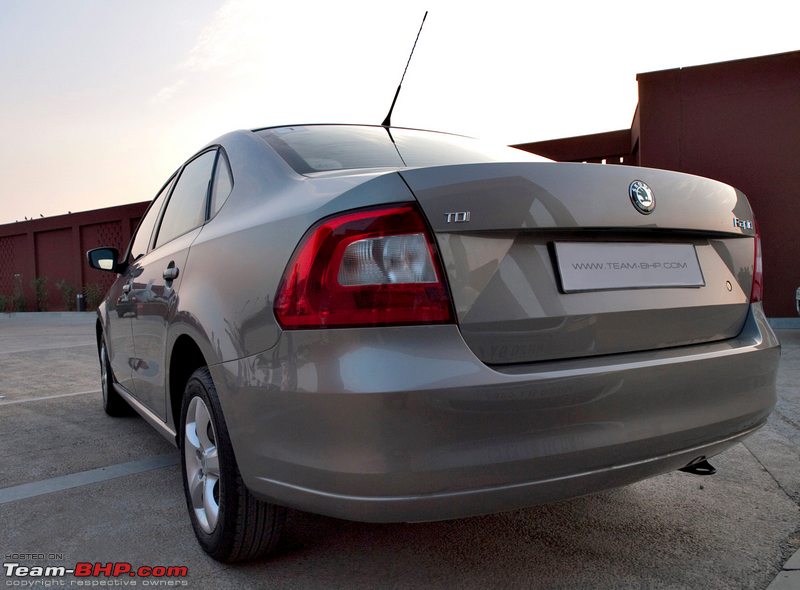 Rear three quarter view:  Elegance variant gets sporty 5 spoke 15" 'Antares' alloys with 185/60 R15 tyres: 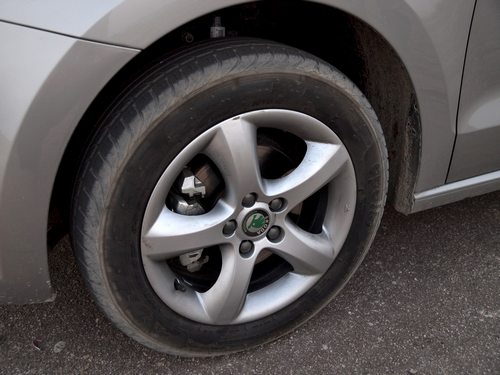 Side profile is identical to the Vento, save for the front: 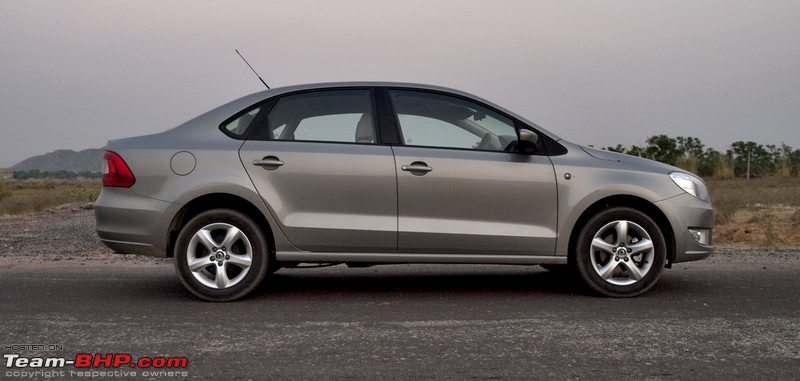 Rapid and Fabia share the same grill, headlights and fog lamps: 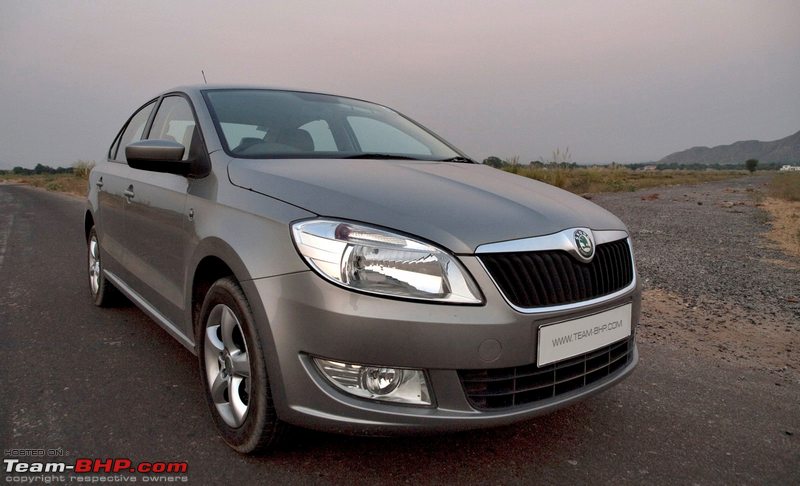 'C' motif seen on the tail lamp (similar to the Laura): 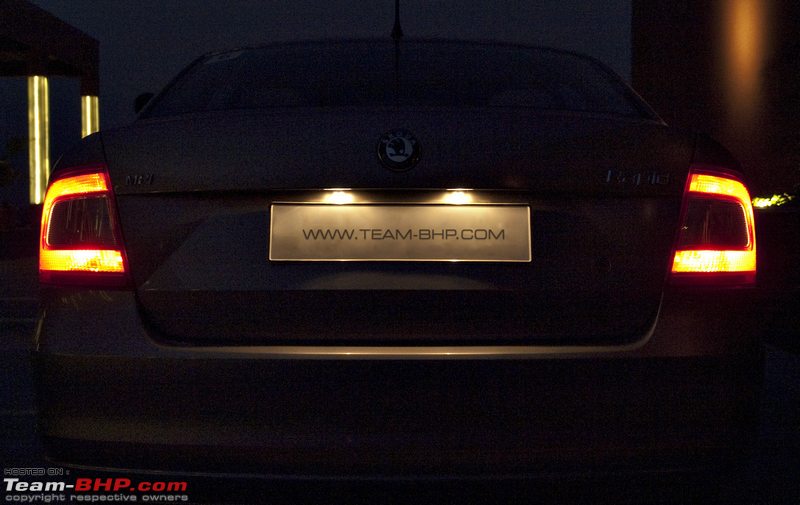 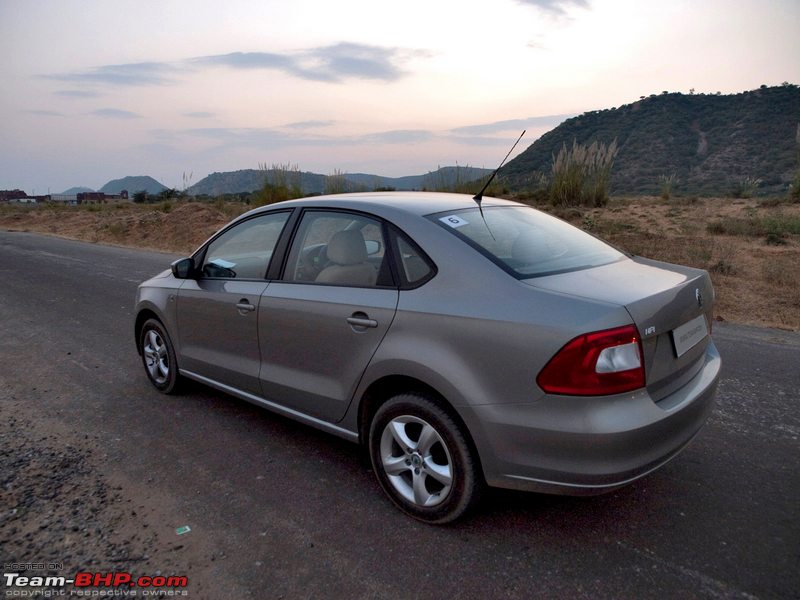 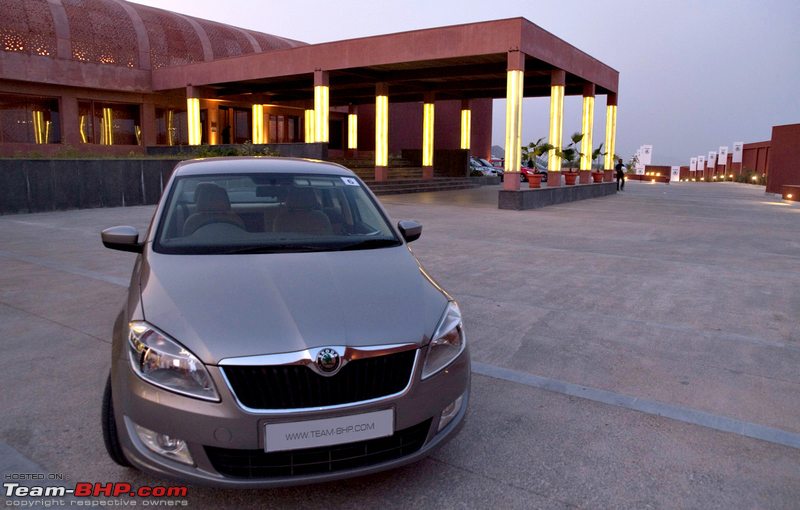 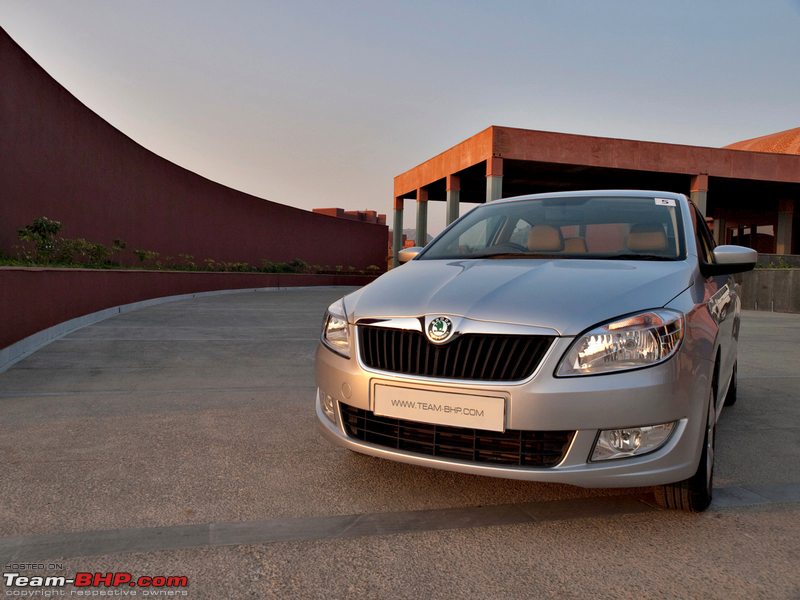 Last edited by Vid6639 : 17th November 2011 at 16:39. |
| |  (32)
Thanks (32)
Thanks
 |
| The following 32 BHPians Thank Vid6639 for this useful post: | .anshuman, aaren, anekho, ashwinmanuk, AutoIndian, Batfreak, deetjohn, echo77, GTO, hemen, hrman, jessie007, kanna.sridharan, Klub Class, kryptonite, Loud, Patriot_Vishwas, planet_rocker, RavenAvi, Reinhard, ritzy, RSR, SDP, shobhit.shri, Shome, SmartCat, speed kills, swiftnfurious, Th!ru, The_Outsider!, Vik0728, _raVan_ |
| | #3 |
| Team-BHP Support  | Re: Skoda Rapid : Test Drive & Review 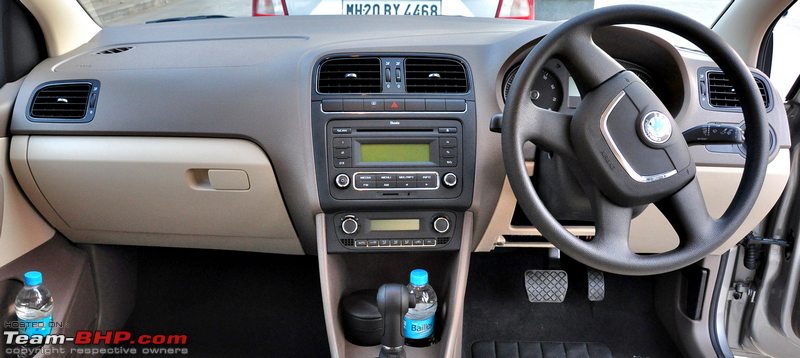 Open the three stage doors, step inside and you'll get a sense of Déjà vu. If you’ve sat inside a Vento or Polo, well, you’ve been in a Rapid too. The interiors are nearly identical to the Vento. Keen observers will notice the different colour combination of the interiors. Where the Vento has a brey shade on the dash, the Rapid gets a browner colour. It won’t be to everyone’s liking, but it doesn’t hurt the eyes either. What we did like, compared to the Vento, was the dominant application of the darker shade (instead of beige). In the Vento's cabin, you get beige on the door pads, lower part of the dash (including centre console), carpet and seats too. The Rapid uses light beige only for the seats, partial door pads and lower half of the dash. However, the beige seats feel a notch lower in material quality compared to that of the Vento. The best part is the black carpeting which obviously doesn’t soil as easily as beige. This colour combination doesn’t look dull, neither does it look like too many shades have been used. In fact, it’s more practical than the Vento. The other difference, of course, is the 4-spoke Skoda steering wheel that is similar to the one in the Fabia. It is comfortable to hold and surprisingly, has a very easy-to-press horn, despite having an inbuilt airbag. The steering isn’t leather wrapped though, not even on the fully-loaded Elegance variant. Steering-mounted controls are also conspicuous by their absence. It is adjustable for reach and rake, both of which offer a wide adjustment range. The instrument console varies a bit from the one in the Vento, with different fonts used on the dials, and the use of white needles (instead of red). The tachometer has markings for every 500 rpm. The MID offers data on travel time, distance travelled, average speed, instantaneous fuel efficiency, average fuel efficiency, distance to empty, service interval, outside temperature, clock and a gear shift indicator. BTW, the gearshift indicator on the diesel disappeared after some time on our car. I’m guessing it is because of something we did when playing around with the MID, as it reappeared later on after fiddling some more. The front seats are comfortable even for 6 footers, thanks to the long travel range. It’s easy to find a comfortable seating position after playing with the seat height & steering rake / reach adjustments. The height adjustable center armrest is incredibly comfortable. Samurai especially liked it as he was able to shift gears, keeping his elbow on the driver armrest itself. The gear knob resembles an inverted golf club (typical of Skodas). The foot well is spacious, albeit a dead pedal is sorely missed, especially on the AT variant. The dashboard overall looks less premium than the Vento’s, thanks to the brown shade. The AC vents are lined with a shiny black finish which doesn’t look as good as the brushed aluminium of the VW. Also, the Rapid has a shiny chrome finish on the steering boss area, gear knob, climate control buttons, audio system and headlight switches (compared to brushed aluminium on the Vento). At the back, you'll find good legroom even behind a 6 foot driver. The seats are comfortable with good all-round support. On the flip side, I found the seatback to be a li'l too upright for my taste. Ingress and egress are not as easy as say a City, but better than the Hyundai Verna. It's important to note that the rear seat is comfortable only for 2 passengers, and not 3. The primary reason is the tall transmission tunnel which will severely restrict foot room for the 5th occupant. Just like in the Vento, there is a seat-adjust lever that rear passengers can use to move the front passenger seat fore & aft (see picture below). Rear passengers also get AC vents, though I didn't find them to be helpful, as the blower isn't powerful enough. The parcel shelf is useless as anything you put on it will simply slide off. Storage spaces abound in the Rapid. All 4 doors have door pockets which can hold 1L bottles (the front door pockets can even take in the 1.5L variety). The front cup holders are huge and can easily hold 500 ml bottles too. Right ahead of the cup holders is a deep storage cubicle to hold the knick knacks. You also get 2 small slots on both sides of the hand brake. The audio system is a basic unit that doesn't get the USB input or steering mounted controls that the Vento recently got. It can read from SD cards though, and does have an AUX-in. A look at the brown shade of the dash: 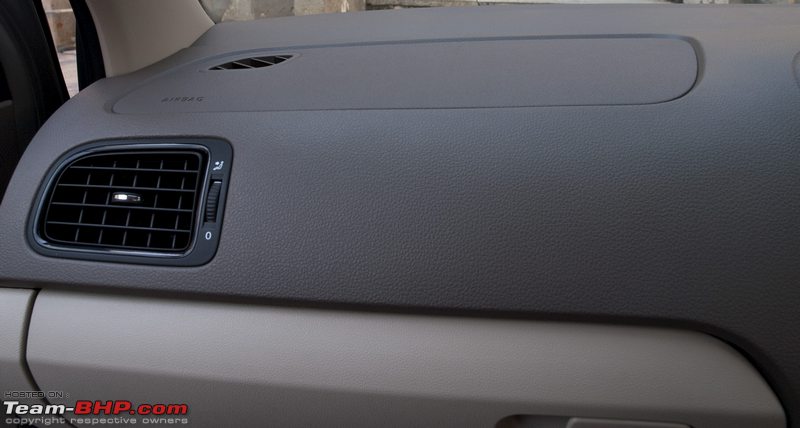 Skoda's 4 spoke steering wheel is nice to grip:  Easy to read dials: 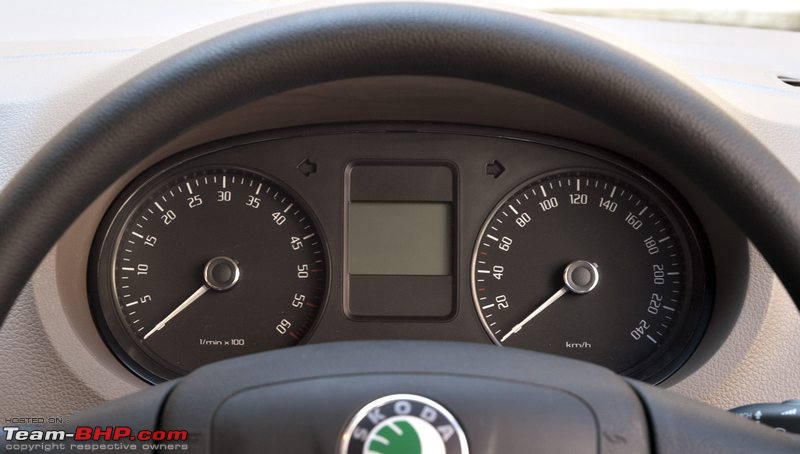 Golf-club shaped gear knob. The petrol's shift quality is the slickest of any car in the segment. Diesel is a tad notchy and vague:  Driver footwell is spacious. Dead pedal is sorely missed: 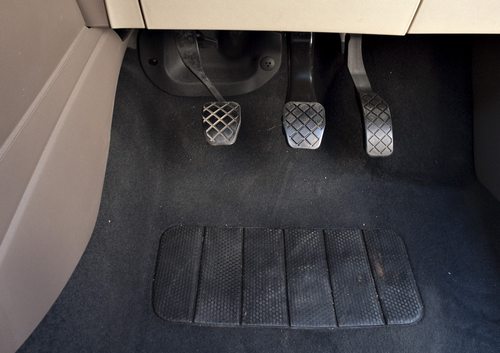 Audio head unit with an SD card slot and Aux-in: 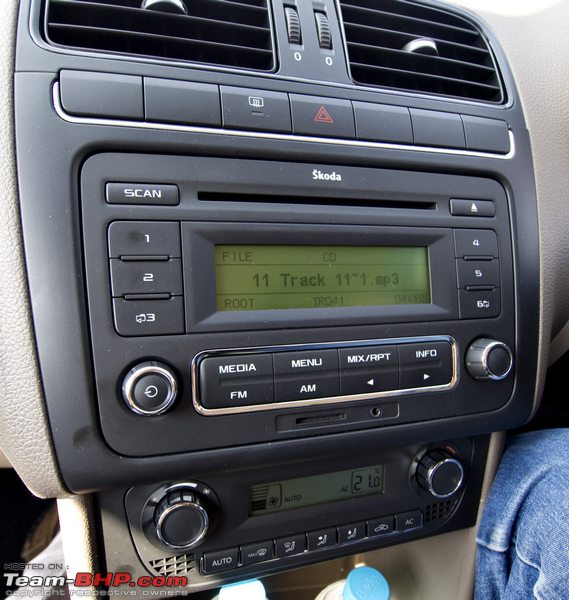 Spacious glove box. Seen here is a full sized D-SLR fitting in: 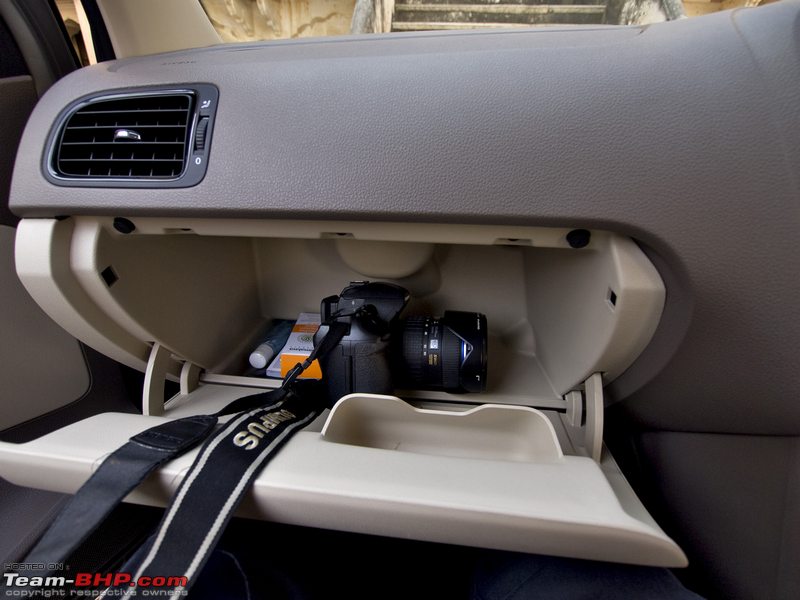 Driver's seat set all the way back and all the way down. A very relaxed driving position, even for a six footer:  Front armrest is height adjustable; incredibly useful on long drives: 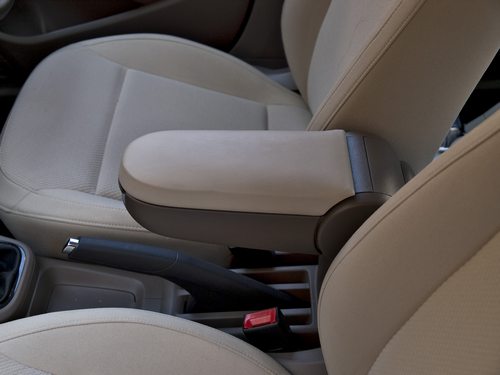 You can easily shift gears without lifting your hand off the armrest: 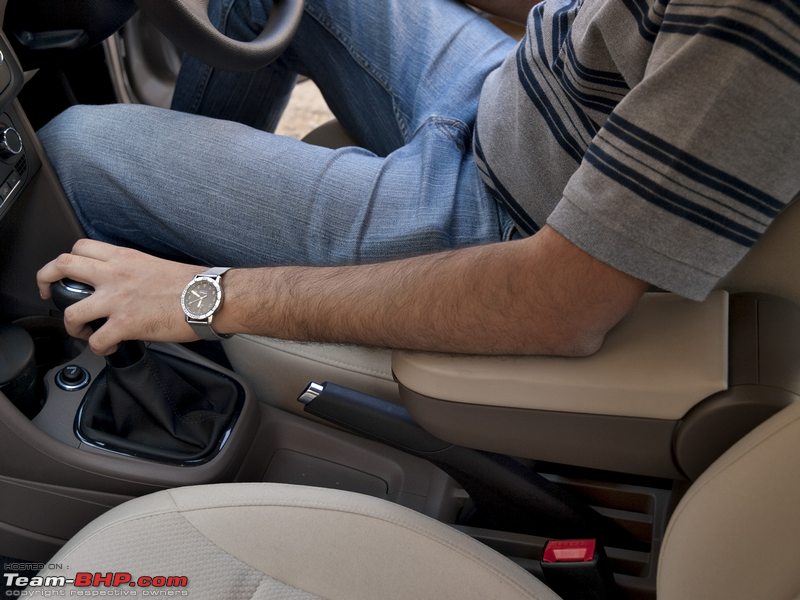 Only way to lock all doors is to press the button. No auto lock, though it can be programmed at the dealer level:  Boot release switch is similar to the power window button:  Check the different finishes out. Headlight switch gets chrome, and the air-con vent a less-premium shiny, black finish:  Front bottle holders can hold a 1L bottle: 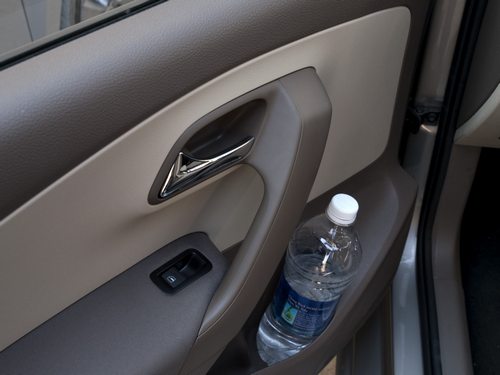 Front roof lamps don't have individual map lights like the Vento. Vento's map lights pictured at this link (thanks to BHPian ninjatalli): 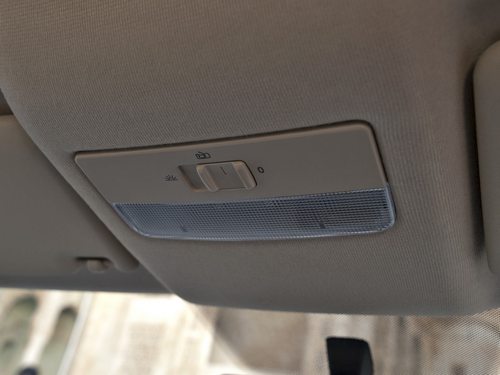 Aircon vents can be completely shut: 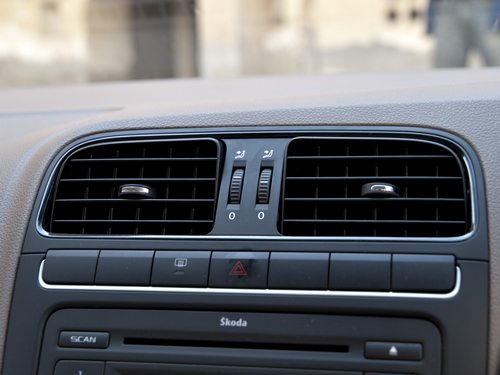 Rear legroom with driver's seat all the way back:  Rear legroom with passenger seat pushed all the way forward, just how the "Saheb" would like it: 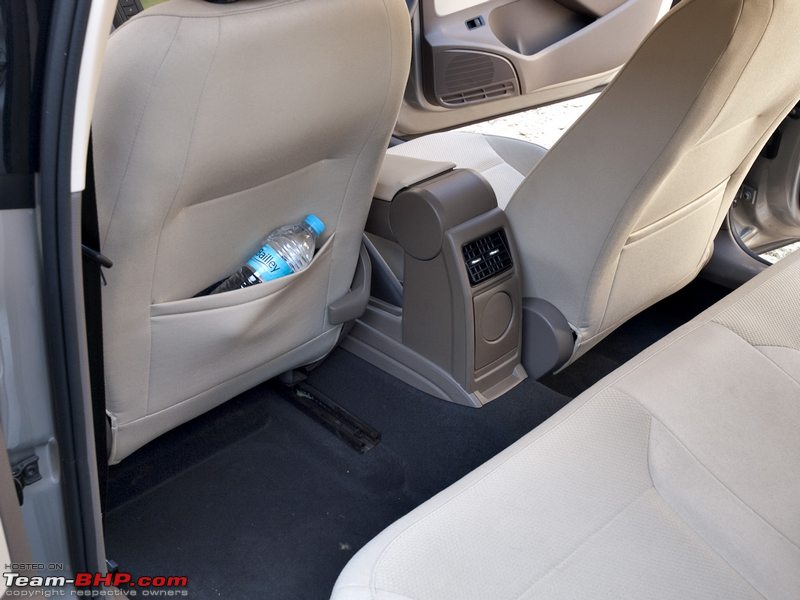 Rear armrest a tad too high, but still comfortable:  Front seats set to a reasonably comfortable position for a 6 footer: 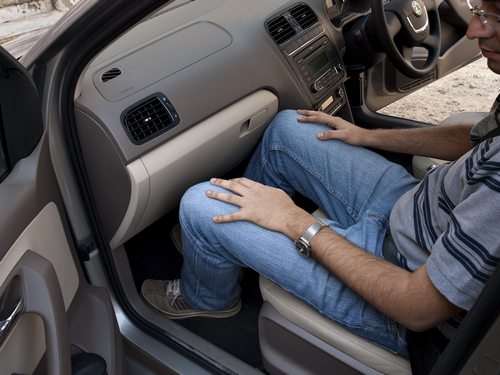 Rear legroom with the front seat set to the same position as above. Not bad for 2 six footers sitting behind each other:  Green illumination for the dials. Check out the FE from an AT after spirited driving  . Ignore the trip meter as it was reset after 200kms: . Ignore the trip meter as it was reset after 200kms: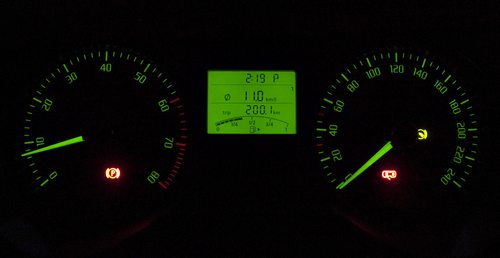 Last edited by Vid6639 : 16th November 2011 at 17:53. |
| |  (26)
Thanks (26)
Thanks
 |
| The following 26 BHPians Thank Vid6639 for this useful post: | anekho, Aragorn, AutoIndian, Batfreak, echo77, GTO, jessie007, kanna.sridharan, Klub Class, kryptonite, lurker, Madan Gopal, maxaud, moralfibre, ninjatalli, Patriot_Vishwas, planet_rocker, RavenAvi, Rshreyansh, RSR, SDP, shobhit.shri, swiftnfurious, The_Outsider!, Vik0728, _raVan_ |
| | #4 |
| Team-BHP Support  | Re: Skoda Rapid : Test Drive & Review Other Points: • Skoda Rapid AT Ambition is the cheapest automatic sedan in the country as of now. • Skoda claims that the Rapid and Vento are mechanically similar with no improvements to the Rapid. We find this very hard to believe as the Rapid has a superior suspension setup, and way better NVH insulation. Further, the Rapid MT was found to be more responsive than the Vento MT, forcing us to review it the next day. • The only reason there’s no diesel on the AT is because the 6 speed AT is designed for low torque engines. For the diesels, VW has only the DSG which would have worked out more expensive. Fortunately Ford didn't think so while putting the DCT on the Fiesta automatic. Plus, a diesel AT would cannibalise sales of the Laura / Jetta AT too. I have a feeling they will come sooner or later. • Contrary to some news reports, Skoda has no plans to export the Rapid to other countries like South Africa in the near future. • The Rapid and Mission-L are not the same, even though the Rapid's rear boot design is heavily inspired from it. Mission L would probably not come to India anytime soon. Read about the Skoda Mission L concept here. • Rapid was actually the internal name assigned for this car. The final name that Skoda decided on was "Lauretta". This name got leaked out to the media, and the public response was so bad that they shelved the Lauretta name altogether. What a relief! • The Rapid's horn is the "peep peep" type, and not the typical skoda “paaanp paaanp” horn. • All 4 windows can be opened or closed from the key remote. Really useful in case you forget to shut one window. • All 4 windows are equipped with anti-pinch protection and auto up / down. Very nice. • Control stalks are left-hand-drive oriented. Thus, the indicator stalk is on the "wrong" side. • The armrest does foul with the handbrake. After a while, you just get used to pulling the hand brake from around the armrest. Driver armrest is all the more useful on the Automatic variant where the left arm has no work at all! • If you turn down the audio volume to zero and switch off the car, when you turn it back on, the volume goes to a default value (and not the zero where you left it). • If you stall the engine, you need to turn the ignition off completely, and then back on again to start the engine. • In the AT, you can’t change from D to S without pressing a button. Also, the AT never goes to 6th gear in S mode. • We noticed some wind noise entering the cabin from the front A-pillar area. • The AC vents seem to have a very narrow throw of air. If you turn the vent to the left, only the left of the vent has airflow (in most other cars, the entire vent throws out air but towards the left). Similarly, if you point the vent straight, only the centre has a stream of air (with the left and right louvres devoid of air). As a result, air flow is in a narrow stream & Vid6639 found it quite difficult to adjust the vents. This is not an issue with the Rapid only; Vid6639 noticed it in the Vento as well. He thought the Vento's vents were not working initially. • Disclaimer : Skoda invited Team-BHP for the Rapid test-drive. They covered all the expenses for this driving event. Last edited by Samurai : 17th November 2011 at 10:42. |
| |  (22)
Thanks (22)
Thanks
 |
| The following 22 BHPians Thank Samurai for this useful post: | 90BHP, anekho, AutoIndian, echo77, Funny, GTO, kanna.sridharan, Klub Class, kryptonite, Madan Gopal, mmmjgm, narayans80, Patriot_Vishwas, planet_rocker, RavenAvi, RSR, SDP, shobhit.shri, supremoo, sups, The_Outsider!, _raVan_ |
| | #5 |
| Team-BHP Support  | Re: Skoda Rapid : Test Drive & Review The Skoda Rapid has the same engine options as the VW Vento. The 1.6L diesel is rated at 104 BHP (4,400 rpm) and 250 Nm of torque (1,500 - 2,500 rpm). The 1.6L petrol is also rated at 104 BHP (5,250 rpm) and 153 Nm of torque (3,800 rpm). Both engines are mated to a 5 speed manual transmission. A 6-speed Automatic is available as an option on the petrol Rapid. We drove the diesel first for about 200 kms over single lane highways, dual carriage roads, narrow village roads and crowded market streets. The Rapid Diesel Fire up the diesel engine and you’ll notice that the powerplant is fairly audible on a cold start. Things do get better once it has warmed up though. Also, when driving off on a cold start, one can notice a pulsating vibration through the clutch pedal. This also disappears once the engine reaches its operating temperature. There’s no need to press the accelerator to start moving from a standstill, just a smooth release of the clutch is enough to get the car going. Low end torque is very good in the Rapid. So good that you'd have to try hard to stall, even in the 2nd or 3rd gears. We were driving through pothole-strewn village roads and crowded market places, and not once did we stall the engine. You can even potter about in 4th gear at 50 kph around town. Below 1,800 rpm, this Skoda won't deliver "rapid" acceleration, yet there’s enough torque to keep up with the traffic flow. The fun starts after 1,800 rpm where a gradual surge sets in, and once you hit 2,100 rpm, the car takes off like a wild cat. This behaviour can get very addictive, as we soon discovered. Even when comfortably cruising at 100 kph in 5th gear @ 2,250 rpm, you can easily overtake on single lane highways with just a dab on the accelerator, and no downshift. Of course, the enthusiast in you might want to shift down to 4th and enjoy the sudden surge while overtaking (as was apparent when Vidyut was driving with a wide grin plastered across his face). 5th gear is good from as low as 60 kph all the way to the top speed...you can use it as an automatic on the highways. Red-lining this motor is pointless, as all the fun is in the mid-range between 2,000 - 4,000 rpm. This engine is also well suited to long-distance cruising and can effortlessly cruise at 120 - 130 kph all day. Skoda claims a top whack of 186 kph; we don’t doubt this claim at all. What surprised us was not the performance, but the NVH levels. Having driven a Vento just 2 days prior to the Rapid, the difference in NVH levels left us wondering if these cars are really the same underneath. Where the Vento engine’s clatter was audible at medium speeds and even more so above 3000 rpm, the Rapid was eerily silent (once warmed up, of course). There was no diesel thrum even at 3000 rpm, when cruising north of 130 kph. This was in stark contrast to the Vento where we could hear the diesel working under the hood at any speed. The next day, we took a ride in the Yeti, and were shocked to see much worse NVH compared to Rapid. It appears that Skoda has spent a lot of time & attention on the Rapid's NVH insulation. The gearshift is decent, though we’ve seen better. The throws are short, but a tad notchy and vague on the diesel. I couldn’t shift into fifth smoothly, and always needed to jiggle it a bit. Another irritant I noticed was the vibration you feel on your leg when releasing the clutch. There’s some vibration right at the clutch' biting point, and you feel it every time you change gears. GTO had also reported on this in his Vento review, as many owners did in their review threads. I did not mind this as I am used to driving Jeeps, but it did bother Vidyut. The clutch itself is not that heavy and won’t be a pain to use in city traffic. Suspension, Steering & Brakes What makes the diesel that much more fun to drive is the suspension setup. The suspension is on the stiffer side, but at the same time can take bad roads very easily. At low speeds, the stiffness is felt when going over sharp bumps or completely broken roads. The Rapid tends to jump over them with a very fast rebound, sending a huge thump into the cabin. On the other hand, on regular Indian roads (including mild potholes), you won't even need to slow down. The Rapid simply absorbs these bad roads without breaking into a sweat. It’s much better than the Vento which tends to crash over such roads if you don’t slow down enough. As the speeds pick up, the Rapid shows its true potential. High speed stability is simply brilliant. Body roll is well-controlled and the Rapid flattens any irregularities of the highway. Sudden undulations which would usually throw off any car are taken with aplomb. There was a particular instance when the road suddenly goes up and then down immediately. This would have caused most C segment sedans to literally fly, then bottom out at the drop; the Rapid simply flattened this undulation out at triple digit speeds without complaint. There were no oscillations or unnecessary vertical movements. Initially, there were many occasions where Vidyut was frantically reminding me "this is not your SUV". Since I am so used to ignoring potholes and undulations, I mostly didn’t heed his warning. But we paid no penalty for it. At speeds in excess of 40 kph, it took the potholes as comfortably as my SUV does. And over major undulations or dips, the tossing was better controlled than my SUV since it had a lot less suspension travel. No, the Rapid didn’t bottom out even once. Compared to the Vento, the suspension appears to be more compliant. The Vento is probably better on straight roads, though on typically Indian highways which are nowhere near perfect, the Rapid inches ahead. The Rapid’s suspension setup is like an improved version of the Vento’s. The steering is an electric unit, so is devoid of feedback, yet it weighs up well on the diesel. The steering does not feel overly light at highway speeds. That said, it doesn’t match a pure hydraulic steering for feedback and weight. Of special mention are the brakes which are absolutely brilliant. High speed braking is extremely confidence inspiring, and the Rapid stops with no drama whatsoever. Pedal modulation is perfect, and you can modulate the pedal even during emergency braking to stop exactly where you want it to. Petrol Automatic The Skoda Rapid MPI Automatic is available in the Ambition and Elegance trim levels, which is quite a coup considering how automatic car buyers are always forced to go with the topmost variant. Buyers, whose primary requirement is an automatic, suddenly have two more options at different price points. However, we saw absolutely no marking outside the car to indicate whether the car is an automatic or manual. For that matter, even the trim level is not marked on the outside. 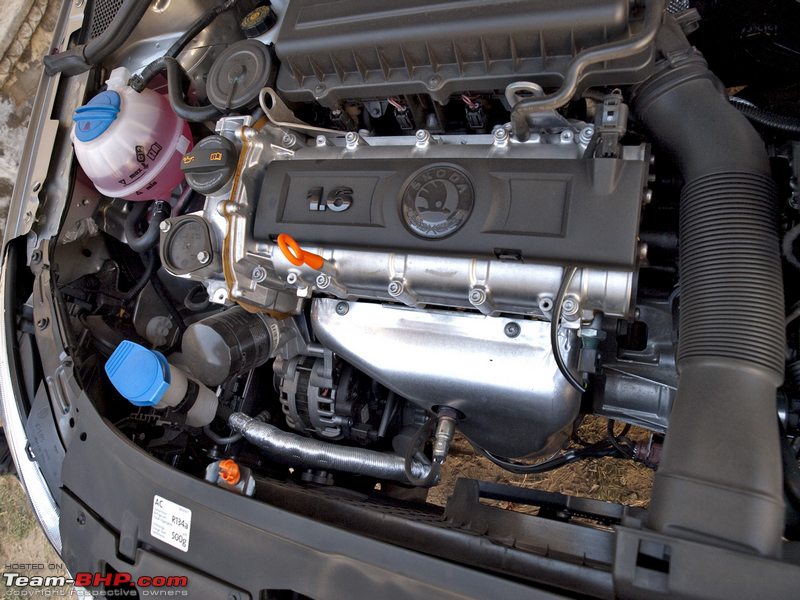 Driving an automatic car doesn't come naturally to a lot of people in India. Habits from manual transmission driving often get passed over to automatic transmission driving. That means a heavy-foot driving style, trying to get acceleration by often stomping the accelerator pedal and even left foot braking in some cases. With the exception of a high-end or DSG equipped car, almost all automatics respond a lot better to light-footed drivers. Therefore, those who try to test the sheer performance of an automatic car with heavy-footed driving end up being disappointed. We spent 200 kms inside the Rapid MPI Automatic on all possible kinds of traffic conditions, with 3 drivers, each driving in very different styles. 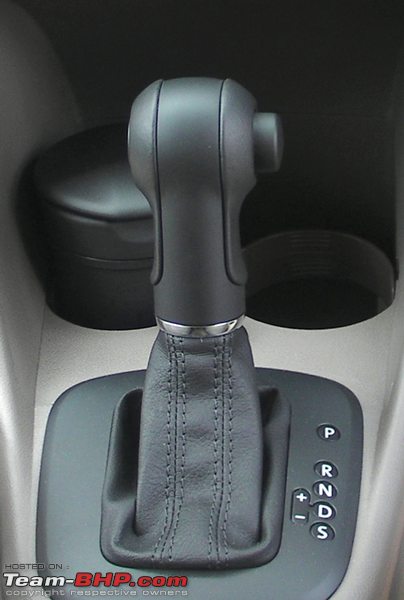 The Rapid AT has a 6-speed automatic transmission and 3 driving modes:
The second driver started off in S mode. By that time, we had seen enough of the D mode to dread it. The driving style was sedate and steady. Speed changes were gradual with a very light foot on the accelerator. In other words, the ideal way to drive an automatic. This is when the Rapid AT started to pleasantly surprise us. With a similar driving style, the S-mode upshifts much later than in the D-mode. Under a light foot, if D-mode upshifted at 1800 rpm, the S-mode upshifted at 2500 rpm. If you press the accelerator a little harder, both modes will upshift at a higher rpm. Even under sedate driving, the transmission provided ample torque to easily overtake on 2 lane highways. Of course, you shouldn’t try to build up speed when you are just about to pass the vehicle; this never works in this AT. But if you build up enough speed a little in advance, overtaking is quite easy while still employing a light foot. The Rapid AT didn’t feel underpowered any more. For highway driving in the Rapid, S mode is the best choice. We were at home! The Tiptronic mode, for all the hoopla it generates, is not something you will frequently use. Although one may assume that an aggressive driver would use it all the time, research suggests otherwise. In a manual-shift, we change gears all the time because we have to. Do we enjoy changing it all the time? Not really. One enjoys shifting gears only while driving spiritedly on open stretches or the twisties. For the rest of the driving time, gear shifting is quite a mechanical process. So there it is. Tiptronic is something you use when you want to absolutely control which gears are used. That might comprise of less than 5% of your driving, may be a little more among sporty drivers. Most drivers of the Rapid AT will use either the D or S mode. To use the tiptronic, simply push the gear lever to the left. Shifting to Tipronic can be done only from the D mode, which is a shame. When you are in the Tiptronic, if you go on pushing the accelerator pedal down, the transmission will upshift only at redline and not before. The engine noise will greatly deter you from trying this too often. The noise before 3000 rpm is not really noticeable. However, you will start hearing it above 3000 rpm, and it will really irritate you above 4000 rpm. Transmission noise is also noticeable, as we didn’t hear a similar sound in the manual version at the same rpm. After some fast manoeuvres using the Tiptronic mode, we settled back to S mode. As the second session came to an end, the fuel efficiency had risen to 10.7 kpl, although we had driven much faster than in the first session. As the third driver took over the final session of another 70 kms, it was time to go aggressive again, but mostly in S mode, occasionally using the Tiptronic. This session had close to 50 kms of pristine 4-lane highway conditions. Overtaking was effortless while the braking was reassuring and well-modulated. We even encountered a panic braking situation to avoid a truck parked in the fast lane, while coming off a curve. The car slowed down predictably and with no drama at all. Even the ABS did not kick in here. It was hard to believe that an AT car could provide so much fun. Yes, the noise was louder than the diesel at speeds over 100 kph, and it is not the pleasant throaty growl you loved in the ol' Baleno or Honda City VTEC. As we rolled out of the 4-lane highway, we guiltily looked up the FE gauge to assess the damage. Holy cow, the overall FE had risen to 11.1 kpl. The next 6 kms of driving through busy and congested village streets brought the FE back to 11.0 kpl as we completed the test drive. Conclusions for the AT:
 Before the test drive, almost everybody had resigned to the fact that the Skoda Rapid is nothing but a re-badged VW Vento. The Skoda officials wholeheartedly agreed too. We had the choice of driving only two cars out of the three engine + transmission combinations available. However, in the first session, one could notice the puzzled expression on the faces of quite a few reviewers. That the driving dynamics of the Rapid were quite different from the Vento, it was accepted across the board. The biggest surprise was the positive feedback from drivers who drove the manual petrol. Our surprise was further compounded when a petrol MT driven by another reviewer could hold on to his lead comfortably in front of the Rapid TDI we were driving. Thus, we frantically scrambled around to arrange for test driving a petrol MT, before we left for the airport. Since we only had about 45 minutes, we couldn’t take it to the distant highway. The suspension setup was very similar to the automatic, and was softer than the diesel. However, the car was super silent. That supported our belief that a lot of the noise in the automatic variant was coming from the transmission, rather than the engine. Since we mostly drove slowly, we tried to stall the engine. Not possible. We had to really strain our ears to listen to the very mild lugging noise. Doing 40 kph in 5th gear was just strange, and there was no protest from the engine. I finally decided to just let go of all the foot pedals in 1st gear. The car kept crawling on level roads and even in a slight incline. When we came across a big speed bump, I expected the car to start coughing. But no, it coolly climbed the speed bump and continued crawling. Unlike the TDI, there was no surge as the engine neared the stalling point. Instead it kept moving at 8 kph at a very steady rpm. I haven’t seen this behavior outside of old school diesel vehicles. This is going to be very useful in stop-n-go traffic. The gearshift was very smooth; in fact, a lot smoother than the TDI, which itself was not bad. The only observation was, one has to let go of the clutch pedal immediately after shifting gears. I am used to cars that expect the accelerator to be pressed to some extent before letting go of the clutch. Doing that resulted in unexpected revving. This clutch wants to be engaged just as the accelerator is pressed. We could test up to speeds of 100 kph, but not more. In that range, it was very easy to drive. Regarding highway driving, we won't say that the Rapid petrol is a performance sedan. If you are looking at speed & open-road performance, don’t look beyond the diesel Rapid. Suspension, Steering & Brakes Driving the Rapid Petrol MT over potholed village roads was a breeze. The suspension on the Petrol is the exact opposite of the diesel, and is softly sprung. While this is good for the same sharp, broken roads that the diesel Rapid would thump over, out on the highway it’s a different story. There’s unwanted vertical movement over undulating roads and you can always hear the suspension working, especially at the rear. It’s much better than the Verna and Honda City, but compared to the Rapid diesel, it’s just not as solid. At higher speeds you don’t get the same confidence as in the diesel, and you are always wary of the speeds you’re doing. It doesn’t mask the speed as well as the Diesel either. On the same stretch of road where the diesel Rapid was rock solid, the Petrol AT was making us aware of the uneven roads beneath. The steering on the petrol was super light too. The diesel’s additional weight helps the steering stiffness, but in the petrol, it’s a typical electric unit. Vid6639 adds that it’s lighter than the steering of his Toyota Altis (which he thought was the lightest till date). Even as the speedometer climbs, the steering doesn’t weigh up enough to inspire confidence. Braking is top notch in both, the AT and MT petrols. Upgrading to wider tyres will do wonders for the Rapid’s dynamics. Last edited by Samurai : 17th January 2020 at 07:29. Reason: youtube fix |
| |  (31)
Thanks (31)
Thanks
 |
| The following 31 BHPians Thank Samurai for this useful post: | akshay81, anekho, AutoIndian, Batfreak, Chethan B G, deetjohn, DevilsCry, dkaile, echo77, GTO, hillsnrains, InControl, IRS, kanna.sridharan, Karthik1100, Klub Class, kryptonite, MAS, mmmjgm, narayans80, Patriot_Vishwas, PearlJam, PrasunBannerjee, RavenAvi, RSR, SDP, sdp1975, shobhit.shri, Shome, The_Outsider!, _raVan_ |
| | #6 |
| Team-BHP Support  | Re: Skoda Rapid : Test Drive & Review The Smaller Yet Significant Things: ORVM's are wide and provide good visibility:  Notice the loose cable dangling underneath the car. GTO had commented on the same in his Vento review. Fellow moderator Mpower says this cable is for the hand brake:  Spot the difference  (hint: the 2 cars are not the same): (hint: the 2 cars are not the same): After 88.8 kms of driving, the fuel gauge hasn't budged a single notch. After 200 kms, the display showed one bar lesser i.e. between 3/4th and full. A diesel engine that appeals to the head as well as the heart:  Headlight rear is easily accessible:  Changing a bulb is child's play:  This huge gear remained exposed on the AT. As soon as you start the car, this gear starts whirring. What about dust and water making their way through?!  This small, additional piece of foam was added to the engine bay, as the rubber beading on the right is the same as the Vento. That is, too short in length as the fender and hood design are different in the Rapid. This piece comes off easily and is a bit of an eye-sore:  Both, the petrol and diesel Rapid, get under-hood damping:  Look what we found!! An Audi part   Close up of the seat upholstery. They are not the same as the Vento, and a notch lower in quality:  Surprising to see no stitching around the cuts of the upholstery cloth. Don't know if the Vento lacks the same too:  A closer look at the rear AC vents:  The rear bottle holder has a clever design:  In one of the Rapid test cars, the boot release switch came loose:  A closer look at the front headlamps sans the typical Skoda engraving of the model name. This is because the part is shared with the Fabia: 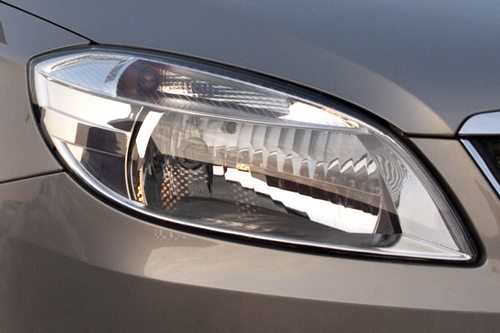 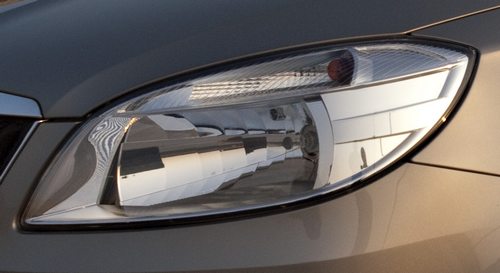 Last edited by Vid6639 : 17th November 2011 at 16:42. |
| |  (32)
Thanks (32)
Thanks
 |
| The following 32 BHPians Thank Vid6639 for this useful post: | amitkb, anekho, Aragorn, arnabchak, AutoIndian, Batfreak, echo77, GTO, hrman, IRS, kanna.sridharan, kaush666, kevintomin, Klub Class, kryptonite, lurker, manolin, MAS, maxaud, narayans80, Patriot_Vishwas, PearlJam, Persian, PPS, prateekm, RavenAvi, RSR, SDP, shobhit.shri, The_Outsider!, valapad, xtremeshock |
| | #7 |
| Team-BHP Support  | Re: Skoda Rapid : Test Drive & Review The slew of fresh launches in the 7 - 10 lakh sedan segment boggles the mind. Previously, the de facto choice was the Honda City. Not anymore, and the sales prove it. The VW Vento as well as the Hyundai Verna have frequently snatched the best selling title from the City many times this year. The level of competition in this segment is the kind that we've only witnessed with hatchbacks earlier. As they say, God bless competition  . Things continue to get better for the most important person in the auto industry = THE CUSTOMER! . Things continue to get better for the most important person in the auto industry = THE CUSTOMER!I've loved the product & value propostion of the VW Vento diesel; in fact, the Vento TDI has been my favourite C segment diesel sedan. Its great to see that the Skoda Rapid only improves on those two factors....meaning, the price & the product. Waiting to test-drive one soon. The Vento has the product attributes that the market wants; after all, it sells over 3,000 units a month and is a very neutral sedan. Skoda didn't get the intended volumes from the hatchback, but I have a feeling that this sedan will give it to them. Only wish that the petrol engine could match the best from the segment. This is perhaps, the second well-priced Skoda in the market, alongwith (ironically) the 20 lakh rupee Skoda Superb. The Yeti is priced too high for the size, I've always considered the Laura to be asking for too much of a premium (especially for the well equipped variants that near 20 lakh rupees) and the Fabia was priced to be a dud (though there have been price corrections recently). P.S. : Work HARD on your after-sales quality, Skoda! You cannot afford to get it wrong anymore. Last edited by GTO : 16th November 2011 at 15:10. |
| |  (7)
Thanks (7)
Thanks
 |
| The following 7 BHPians Thank GTO for this useful post: | .anshuman, amitkb, kevintomin, kryptonite, RavenAvi, RSR, SDP |
| | #8 |
| Senior - BHPian | Re: Skoda Rapid : Test Drive & Review Am still reading the review but in one of the engine bay pictures - I can see the ground below ! So no engine protection below ? The review is fantastic till now, will complete and come back. |
| |  ()
Thanks ()
Thanks
 |
| | #9 |
| Senior - BHPian | Re: Skoda Rapid : Test Drive & Review Excellent review of the Rapid, to me it looks like a good car to buy has slightly more wider presence than the VW, also what i have found if Skoda dealerships are better in dealing with customers then the VW (At least i get the test drive which has been missing in VW till now). How much the OTR prices in bangalore work out to be? |
| |  ()
Thanks ()
Thanks
 |
| | #10 |
| Senior - BHPian | Re: Skoda Rapid : Test Drive & Review Looks like Skoda has a winner on its hand. Looking at the pricing, the mid version of Rapid is only about 3-4k more than Vento TL; and it comes with ABS+1 Airbag. Brilliant move by Skoda. I wonder why should anyone buy the Vento over this IF the A.S.S. of Skoda is good in their city (eg. Blr). @mayankjha1806: I know buddy - i had to pester VW Downtown for 3 months before i got the TD of Jetta & they still dont have a MT for TD. Pathetic. |
| |  ()
Thanks ()
Thanks
 |
| | #11 |
| BHPian Join Date: Aug 2011 Location: Bhubaneswar
Posts: 133
Thanked: 27 Times
| Re: Skoda Rapid : Test Drive & Review Excellent review..!!  One question though. Vento has only two variants (i.e. Trendline & Highline). How come you have shown prices for 3 (Entry, Mid & Premium)?? |
| |  ()
Thanks ()
Thanks
 |
| |
| | #12 |
| Senior - BHPian Join Date: Dec 2008 Location: .
Posts: 1,995
Thanked: 684 Times
| Fantastic review guys - Thank you! Glad to see some improvements on the Rapid over the Vento at a lower price; I wasn't expecting more than a Vento in Skoda clothing! I guess the Rapid is the Octavia's spiritual successor in our market - sales should be strong, good times ahead for Skoda, and in general increased sales for the VW group. Btw, the key fob is the same as the Vento's right? Last edited by anekho : 16th November 2011 at 15:38. |
| |  ()
Thanks ()
Thanks
 |
| | #13 | |
| Team-BHP Support  | Re: Skoda Rapid : Test Drive & Review Quote:
Yup, the same. Only the logo is changed from VW to Skoda, obviously. Last edited by Vid6639 : 16th November 2011 at 15:58. Reason: Fixed the table and clarification | |
| |  (2)
Thanks (2)
Thanks
 |
| The following 2 BHPians Thank Vid6639 for this useful post: | anekho, GTO |
| | #14 |
| Senior - BHPian Join Date: Sep 2007 Location: Chennai
Posts: 1,123
Thanked: 367 Times
| Re: Skoda Rapid : Test Drive & Review Excellent review complimented with fantastic pictures. If I recollect right, VW did some ECU update on the vento TDI to reduce the diesel clatter a while back, may be they have updated this with Rapid at the time of release, which explains the observation about NVH characteristics? Mid-variant is priced and kitted out very well - Fantastic VFM proposition over the other C-Segment options, especially in diesel variant. |
| |  ()
Thanks ()
Thanks
 |
 |


